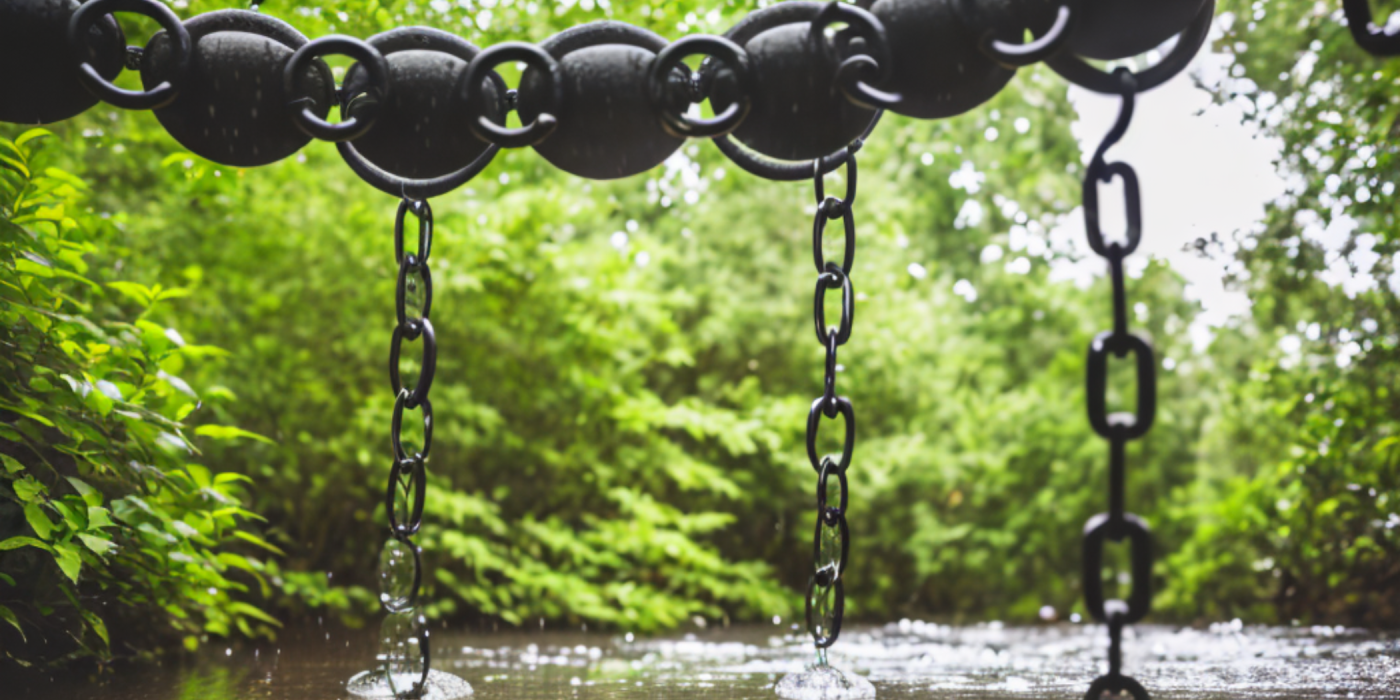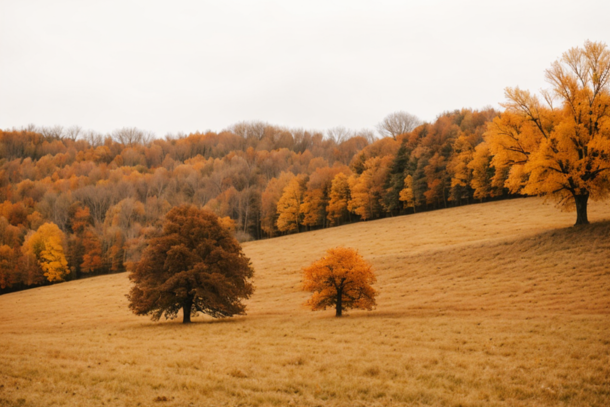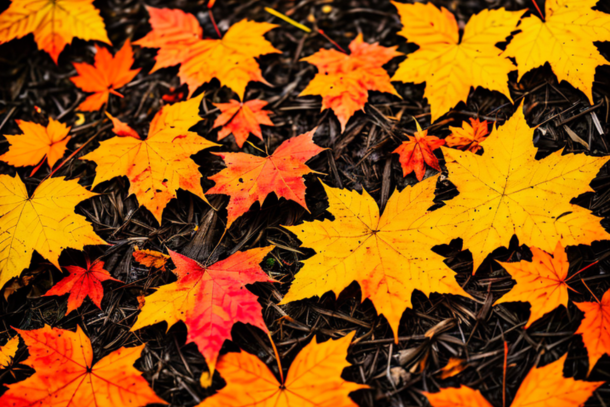Rain Chains Explained: An Essential Guide to the Stylish Downspout Alternative

In the diverse world of gardening and landscaping, new trends often emerge that combine functionality with aesthetic appeal. One such trend that has been growing in popularity in the UK is the use of rain chains. Offering a visually captivating alternative to traditional downspouts, rain chains not only serve a practical purpose but also add a unique decorative element to homes and gardens.
Introduction to Rain Chains
What Are Rain Chains?
Rain chains, also known as 'Kusari-doi' in their native Japan, are alternatives to the traditional downspouts we usually see attached to our gutters. They are essentially chains or sequences of decorative cups linked together and designed to guide rainwater from the gutter down to the ground, a drain, or a water storage container. These unique accessories have a rich history dating back hundreds of years and are celebrated for their ability to transform rainwater flow into a beautiful, tranquil spectacle.
Rain Chains as Downspout Alternatives
But rain chains aren't just about beauty. While they certainly add a touch of elegance and charm to any exterior, they're also fully functional. Like downspouts, their main purpose is to direct rainwater away from a building's foundation. However, they do so with an added layer of visual appeal, turning the mundane act of water drainage into an eye-catching water feature. Furthermore, they contribute to a serene and soothing atmosphere as rainwater trickles down, offering a far more engaging and aesthetic approach to rainwater management.
The Historical Context and Significance of Rain Chains
Kusari-doi: The Japanese Origins
The tradition of rain chains, or 'Kusari-doi', as they're originally known, dates back hundreds of years in Japan. Kusari-doi, when translated, literally means 'chain gutter'. Historically, these decorative yet functional elements were used in conjunction with large roof structures, such as those found on temples and homes, to channel rainwater into basins below.
The beauty of the rain chains lies not only in their design but also in their acoustic contribution to the environment. The sound of water cascading down the chains and gently splashing into the basin is considered a vital aspect of the Japanese garden aesthetic, creating a tranquil, melodic soundscape during rainy periods.
Rain Chains Across Cultures
Whilst rain chains originate from Japan, they have found their way into homes and gardens across the globe. Their appeal transcends geographical and cultural boundaries as more people come to appreciate their unique blend of functionality and aesthetics.
In Western societies, rain chains are often used as a creative and visually pleasing alternative to standard downspouts. They provide an appealing solution for directing rainwater, enhancing the home's external appearance while also creating an engaging water feature.
In some cultures, the water collected via rain chains is considered sacred and used for various rituals. Regardless of cultural context, rain chains are universally celebrated as an elegant alternative to the mundane downspout, transforming the necessity of rainwater management into an art form.
Unveiling the Charm of Rain Chains
A Close Look at Rain Chains
A rain chain, also known by its Japanese name 'kusari-doi', is an ornamental yet functional element that replaces a conventional downspout. It's a series of linked or cup-shaped pieces, often made from metal, which guides the rainwater from your roof to the ground.
As rainwater hits your roof and trickles into the gutter, it is directed to the rain chain. As the water cascades down the chain, it creates a visually pleasing waterfall effect. But beyond the aesthetics, rain chains also produce a tranquil, soothing sound akin to a babbling brook, adding an auditory charm to your outdoor space.
The Anatomy of a Rain Chain
Despite the wide variety of rain chain designs, most share a few common components. The gutter clip or V-hook, often included with the chain, is used to anchor the chain to the gutter. From there, the rainwater cascades down through the length of the chain, which can be a series of links, cups, or other decorative shapes. The bottom of the chain may end in a final larger ornament or simply hang freely.
A World of Rain Chain Designs
Rain chains come in an astonishing variety of designs, ranging from the simplistic to the intricate. Link-style chains, such as the double loop or oval loop, offer a minimalist appeal, while cup-style chains, like the fluted cup or tulip, add more flair. You can also find chains with shapes such as leaves, birds, or bells, adding a whimsical touch to your rainwater management. Choosing a design is a personal choice, allowing you to complement and enhance the overall aesthetics of your home or garden.
The Mechanics of Rain Chains
Understanding Rain Chain Functionality
Rain chains function as a visual and more natural way to guide rainwater from your roof to the ground. They replace a traditional downspout on a gutter system. When rain hits your roof, it's directed into the gutter. From the gutter, instead of going into a closed downspout, the water pours onto the rain chain.
The design of the rain chain - whether it's a series of cups or links - guides the water downward. The movement of water down the chain slows the runoff and provides a soothing sound and a captivating visual spectacle as water dances its way down.
The Science Behind Rain Chains
Rain chains rely on the simple force of gravity to work. As water molecules stick together due to cohesion, they are drawn downwards by gravity, flowing along the path of least resistance - in this case, the rain chain. The links or cups of the rain chain also utilise the adhesive property of water, which makes it 'stick' to solid surfaces.
Advantages Over Traditional Downspouts
Rain chains offer several distinct advantages over traditional downspouts. Firstly, they turn the otherwise mundane task of directing roof runoff into a pleasing visual and auditory experience. The flow of water over the chains creates a peaceful, tinkling sound and a beautiful water feature effect.
Secondly, rain chains are easy to install and require less maintenance than enclosed downspouts, reducing the risk of blockages. They also offer an attractive and functional way to guide water into rain barrels for later use, contributing to more sustainable water management practices.
Exploring Rain Chain Designs
Rain chains come in a variety of beautiful and functional designs, each with its unique charm and aesthetic appeal. Let's delve into the most popular types.
Cup Rain Chains
Cup rain chains are arguably the most common and visually captivating design. As the name suggests, this style consists of a series of cups, often shaped like flowers, bells, or simple geometric forms, linked together. These cups are designed with a hole at the bottom, allowing the rainwater to flow from one cup to the next.
Pros and Cons of Cup Rain Chains
Cup designs are particularly efficient at directing water flow, reducing splashing, and creating a soothing water feature in your garden. However, they might not handle heavy rainfalls as effectively as other designs, leading to overflow.
Link Rain Chains
A more traditional style rooted in the Japanese origins of rain chains is the link design. These consist of a series of rings or other interconnected shapes that guide the water downward. Link chains, while visually simpler than cup designs, offer a mesmerising spectacle of water cascading down.
Pros and Cons of Link Rain Chains
Link chains are better equipped to handle heavy rainfall, providing a free-flowing route for the water. On the downside, they can cause more splashing, and may not create the same level of aesthetic appeal as their cup counterparts.
Unique Rain Chain Designs
The beauty of rain chains is that they can be as individual as their owners. You can find chains featuring leaves, fish, birds, or even thematic elements like umbrellas. There's a design to match every style and personality, turning a simple water management tool into a delightful garden feature.
Materials Utilised in Crafting Rain Chains
Common Materials: Copper, Steel, Aluminium
Rain chains can be crafted from a variety of materials, but copper, steel, and aluminium are particularly favoured due to their durability and aesthetic appeal.
Copper
Renowned for its attractive patina that develops over time, copper is a popular choice for rain chains. As the years go by, the chain evolves from a shiny metallic hue to a unique greenish-blue tone, offering an elegant, aged look. However, do bear in mind that copper is on the pricier side when compared to other materials.
Steel
If strength and longevity are your main concerns, then a steel rain chain could be a viable option. Stainless steel offers excellent corrosion resistance, and with appropriate maintenance, these chains can last for decades.
Aluminium
Aluminium rain chains are a cost-effective alternative, offering lightweight and rust-resistant properties. While they may lack the weight and wind-resistance of heavier materials, they are more than capable of handling the typical British rainfall.
Weighing Up the Pros and Cons
Every material comes with its own set of advantages and drawbacks. Copper is aesthetically pleasing and ages beautifully but comes with a higher price tag. Steel provides robustness and longevity but may require more maintenance to prevent rusting, particularly in coastal areas. Aluminium is light, affordable, and rust-resistant, but might not withstand strong winds as well as its heavier counterparts.
When choosing a rain chain, consider your local climate, the architecture of your home, and your personal style preferences. And remember, whatever material you select, a well-maintained rain chain can serve as a functional and ornamental addition to your home for many years to come.
Installation and Maintenance of Rain Chains
Steps to Install a Rain Chain
Installing a rain chain isn't a taxing task and can be completed within a couple of hours. Here's how:
-
Remove the existing downspout: Ensure the old downspout is safely removed. This will typically involve unscrewing it from the gutter.
-
Attach the V-hook: Rain chains usually come with a V-hook or a hanger that needs to be secured into the drain hole.
-
Hang the rain chain: Once the hook is installed, simply hang your rain chain. It should hang freely and reach near the ground level.
-
Secure the rain chain: Consider using a basin or a heavy stone at the bottom of the chain to prevent it from swaying too much in the wind.
Potential Installation Challenges and Solutions
You might encounter a few challenges when installing your rain chain. For instance, if the drain hole is larger than the V-hook, you might need to purchase an installation kit, available at most garden centres or online shops, which includes a larger adapter.
Another common challenge is strong wind. In wind-prone areas, a cup-style rain chain is more advisable than a link-style chain due to their heavier weight and less susceptibility to wind.
Maintenance and Care for Rain Chains
Maintaining a rain chain is quite straightforward. It's advisable to clean it annually to remove debris and prevent blockages. Depending on the material of your chain, you might need to check for signs of wear and tear, rust, or tarnish and take the necessary actions. As with all garden features, regular attention will ensure longevity.
Environmental Benefits of Rain Chains
Rain chains not only offer an aesthetic appeal but also provide environmental benefits. These are especially valuable in our ever-growing pursuit of sustainable living and gardening practices.
Rain Chains as Part of a Sustainable Water Management System
Rain chains are not just visually captivating; they're also a functional component in a sustainable water management system. They guide the rainwater from the roof towards the ground, reducing the likelihood of water damage and soil erosion. By directing water in a controlled manner, they assist in mitigating the adverse effects of heavy rainfall on your property.
Harvesting Rainwater
With the use of rain barrels at the bottom of rain chains, the collected water can be stored for future use such as watering plants, washing vehicles, or even as emergency water supply. This simple, yet effective, rainwater harvesting can play a part in reducing our reliance on mains water.
Use of Rain Chains with Rain Barrels and Gardens
Rain chains can be used in conjunction with rain barrels to maximise water collection. Directing water into garden beds is another practical application. Here, rain chains aid in delivering water to your plants, further reducing the need for watering and promoting a lush, healthy garden.
Role of Rain Chains in Attracting Wildlife
In addition to their practical applications, rain chains have the unexpected benefit of attracting wildlife. The sound of water trickling down can attract various bird species, creating a vibrant, lively garden. Some designs even allow small birds to perch and drink from the cups or links of the chain, transforming your garden into a welcoming haven for local wildlife.
Where to Buy Rain Chains in the UK
Buying the perfect rain chain can significantly enhance the aesthetic appeal of your garden while also providing a practical function. Let's dive into where you can purchase these and some tips to choose the right one.
Listing of Reliable Online Suppliers
There are several places in the UK where you can buy high-quality rain chains.
Rain Chains Direct
A specialised store for all things rain chain, they offer a variety of designs, from traditional to more unique patterns, and all at competitive prices.
Amazon
Not to be overlooked, Amazon's marketplace has a plethora of vendors offering rain chains of various types, materials, and designs. Be sure to check the reviews before purchasing.
Etsy
If you're seeking a more artisanal touch, Etsy offers a wealth of handcrafted rain chains from local and international artisans.
Tips for Choosing the Right Rain Chain
Choosing the perfect rain chain involves more than just picking one that looks nice.
Material Consideration
Materials can range from copper to stainless steel and even ceramic. Copper is popular for its patina over time, but stainless steel is often more durable.
Length and Design
Consider the height from your gutter to the ground and choose a design that complements your house's style. Some rain chains come in adjustable lengths.
Functional Aspects
Ensure your choice can handle the volume of rainfall your home typically sees. Larger cups or more substantial links can handle heavier rain better.
Happy rain chain shopping!
Wrapping Up: The Charm and Practicality of Rain Chains
Revisiting the Utility and Aesthetic Appeal of Rain Chains
Rain chains have emerged as a compelling alternative to traditional downspouts, merging functionality with an undeniable aesthetic appeal. Serving as a decorative element in many gardens, they add a touch of elegance while efficiently managing rainwater.
The key lies in their design – simple yet sophisticated. Whether you opt for the mesmerising flow of the link design or the harmonious trickle of the cup design, the sight and sound of water cascading down a rain chain is undeniably therapeutic. Beyond the visual and auditory pleasures, the practical aspects of rain chains are equally attractive. Their role in effective water management, compatibility with rain barrels, and contribution to wildlife habitats further enhance their appeal.
Advocating for Rain Chains in Modern Landscaping
In an era when sustainable practices are increasingly embraced, the adoption of rain chains presents an opportunity to contribute positively to our surroundings. By incorporating rain chains in modern landscaping, we not only elevate the aesthetic value of our homes but also support environmentally friendly practices.
The beauty of rain chains lies in their simplicity. They're easy to install, pleasing to look at, and they contribute to a sustainable ecosystem. For these reasons, it's high time that more homeowners consider integrating rain chains into their outdoor spaces. They're not just a Japanese tradition or a gardeners' fad but a testament to how art, nature, and science can harmoniously coexist in our daily lives.
Useful Resources and References
Cited Sources
Throughout this article, a range of reliable sources were used to provide accurate and in-depth information. Here are some key references:
The Art of the Japanese Garden by David and Michiko Young
This book explores the history and impact of various Japanese garden elements, including Kusari-doi or rain chains.
Rain Gardens: Sustainable Landscaping for a Beautiful Yard and a Healthy World by Lynn M. Steiner and Robert W. Domm
A comprehensive resource for sustainable gardening, including a section on the effective use of rain chains.
Further Reading on Rain Chains and Water Management
For those interested in delving deeper into the topic of rain chains and sustainable water management, consider the following resources:
Rainwater Harvesting for Drylands and Beyond by Brad Lancaster
An excellent guide for anyone interested in sustainable water practices. It provides a practical perspective on water management tools like rain chains.
RHS: Water Management
The Royal Horticultural Society provides a comprehensive guide on effective water management in gardens, including the use of rain chains.
Creating Rain Gardens: Capturing the Rain for Your Own Water-Efficient Garden by Cleo Woelfle-Erskine and Apryl Uncapher
This book offers a wealth of knowledge on creating beautiful and water-efficient gardens, including the usage of rain chains as part of a larger water conservation strategy.
Related to this article are the following:
I do hope you have enjoyed this article and hope that you will subscribe to my newsletter so you can get the latest information about all things naturally relaxing.
Stay in touch, join the Naturally Relaxing Newsletter
Newsletter Signup
Post Your Comments
or post as a guest
Be the first to comment.
Latest articles in Weather

Winter Getaways: Escape the Chill with These Enchanting Winter Destinations

Embrace Autumn's Coziness: Finding Comfort in the Magic of the Season

Understanding Seasons: Discover the Symbolic Meanings of the Four Seasons

Embracing Autumn: Your Ultimate Guide to Seasonal Preparation and Trends

Essential Tips for Staying Cool and Safe During a Scorching Heat Wave






